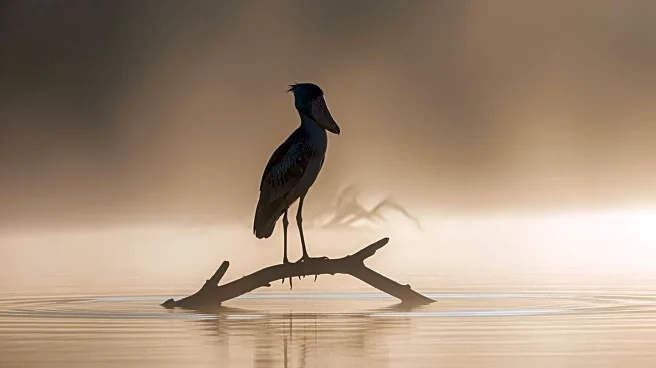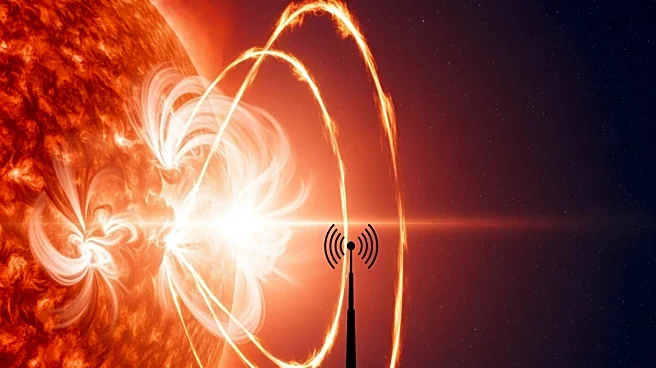What's Happening?
A viral video featuring a shoebill bird landing on a boat in Africa's Mabamba Swamp has captured public attention due to its dinosaur-like appearance. Shoebills, known for their large bills and prehistoric
look, can reach heights of up to five feet, making them taller than some adults. Despite their stork-like appearance, shoebills are more closely related to pelicans. The video, shared by Mabamba Trips, a wildlife trip operator in Uganda, has sparked curiosity about these unique birds, which are found in freshwater swamps across Africa. Shoebills are considered vulnerable due to habitat decline and hunting, with an estimated population of 3,000 to 3,500 adult birds.
Why It's Important?
The viral video highlights the public's fascination with avian species that resemble dinosaurs, drawing attention to the shoebill's unique characteristics and conservation status. Shoebills serve as a reminder of the evolutionary link between birds and dinosaurs, offering insights into the diversity and adaptation of avian species. The video also raises awareness about the conservation challenges faced by shoebills, emphasizing the need for habitat protection and sustainable wildlife management practices. Increased public interest could lead to greater support for conservation efforts and initiatives aimed at preserving these remarkable birds.
What's Next?
Conservationists may leverage the viral video's popularity to advocate for increased protection of shoebill habitats and address threats such as hunting and habitat disturbance. Efforts to monitor and manage shoebill populations could be intensified, with potential collaborations between wildlife organizations and local communities. Educational campaigns highlighting the ecological significance of shoebills and their role in biodiversity could be developed to foster public engagement and support for conservation initiatives.
Beyond the Headlines
The shoebill's resemblance to dinosaurs underscores the enduring impact of evolutionary history on modern species, offering a unique perspective on the interconnectedness of life on Earth. The bird's distinctive features serve as a reminder of the complexity and diversity of avian evolution, challenging perceptions of what constitutes a 'typical' bird. This fascination with prehistoric-looking species may inspire further scientific research into the evolutionary pathways that led to the development of such unique traits.











